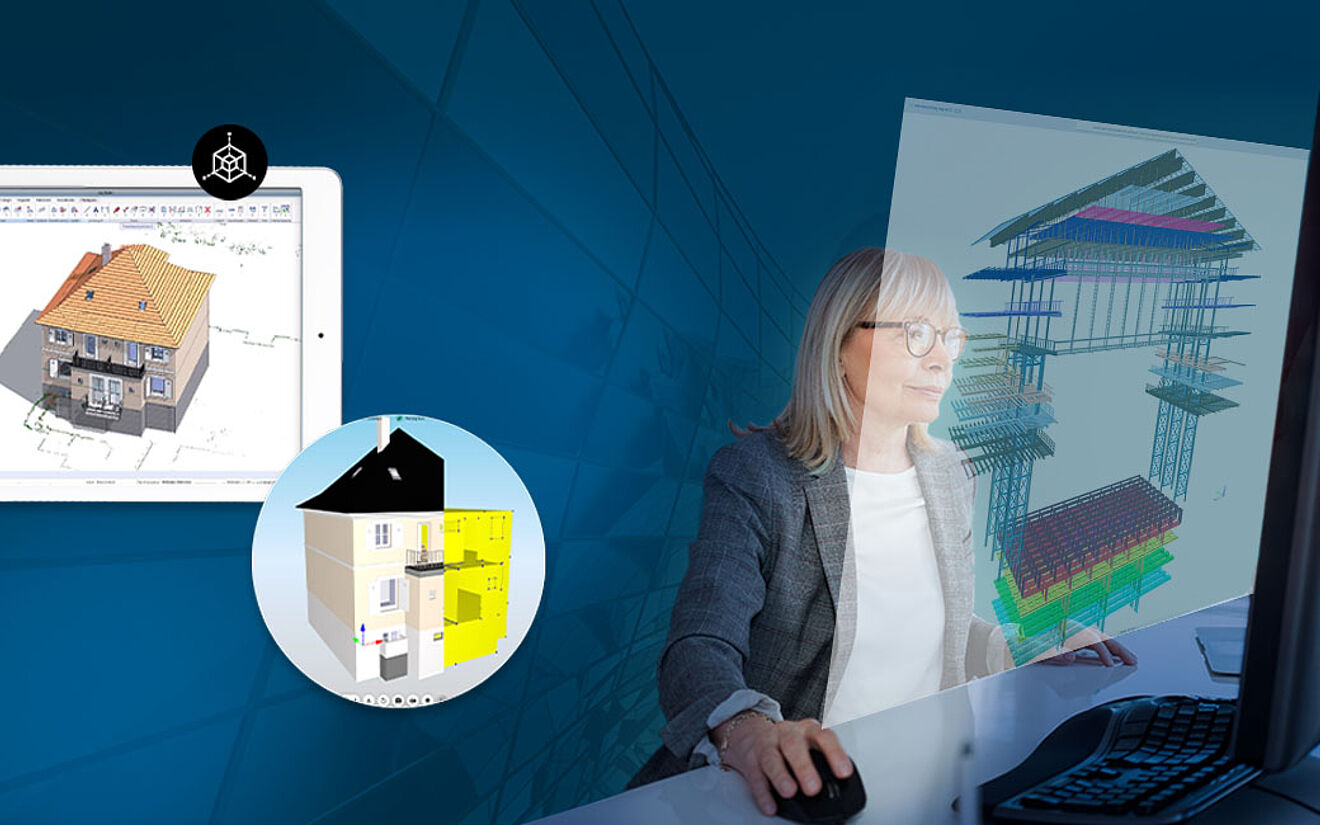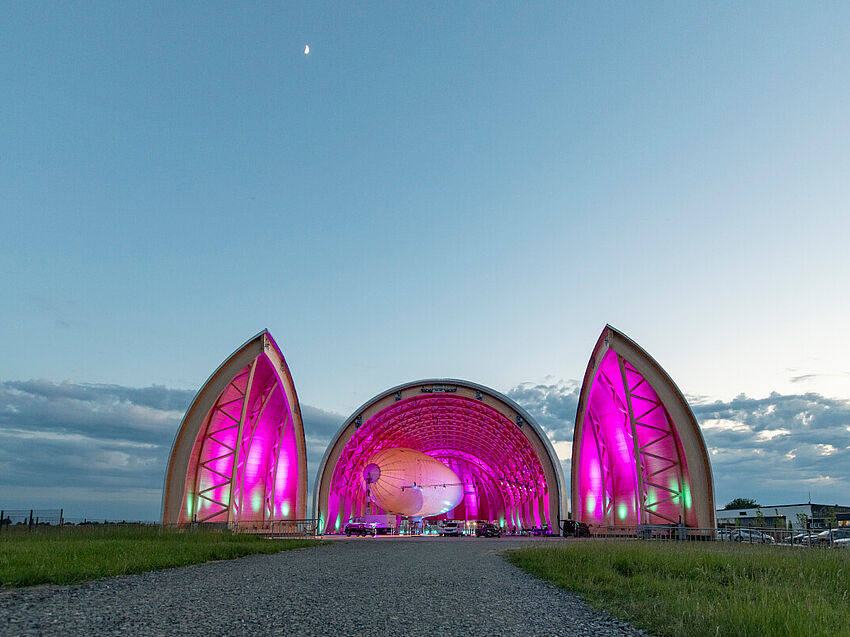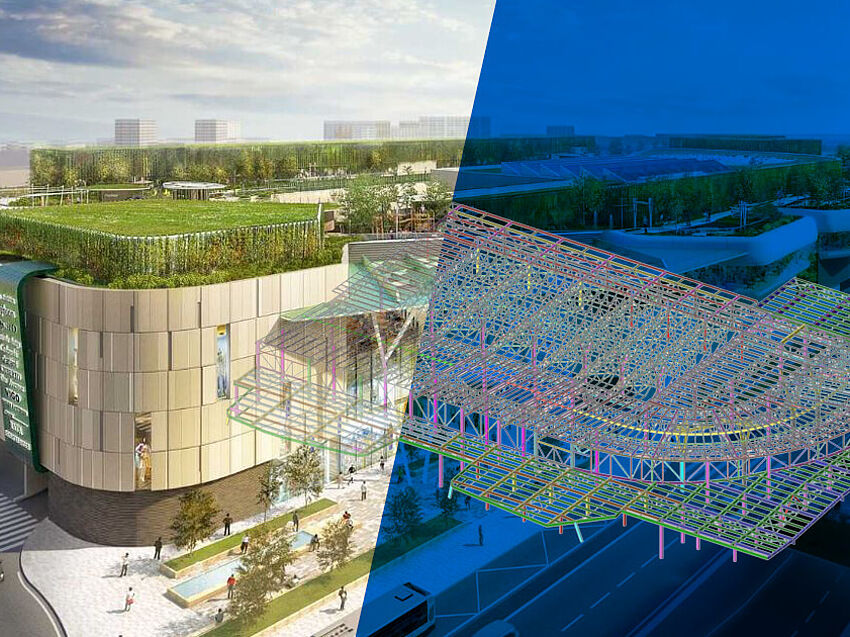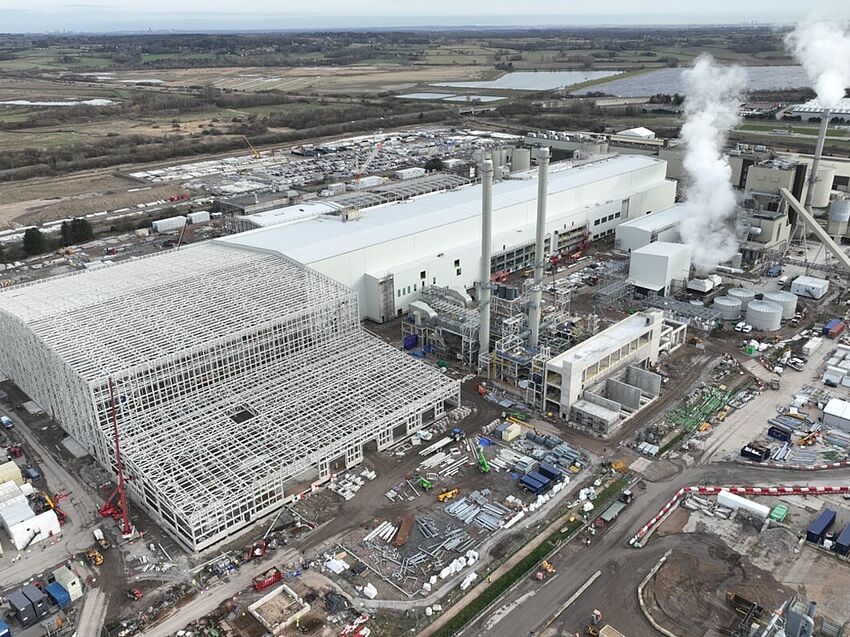Airship Hangar Mülheim: A Masterpiece of Innovative Timber Construction
The construction industry is under pressure to reduce its carbon footprint, while at the same time, demand for sustainable and affordable housing continues to grow. In this context, refurbishing existing buildings plays a crucial role. Instead of generating additional gray energy through demolition and new construction, renovation and conversion enable the sustainable use of existing structures. A study by Arup shows that refurbishment can save up to 70 percent of CO₂ emissions compared to demolition and new construction. In addition, the conversion of existing buildings prevents further land sealing and thus contributes to the preservation of biodiversity.
Structural engineers make a decisive contribution to sustainability by evaluating the structural properties of existing structures and planning repair measures. They face numerous challenges, such as the calculation of modified load transfers or the structural analysis of existing components for revitalization. In order to manage these complex tasks efficiently, powerful software solutions are required to support structural engineers in every phase of planning existing structures.
From digital as-built surveys to interdisciplinary collaboration, the following five reasons show why ALLPLAN is the ideal choice for structural engineers who are working with existing buildings.
1. Digital inventory through laser scanning
The digital capture of existing building data is the first step in structural design. Modern 3D laser scanning technologies offer a detailed and reliable capture structures, regardless of the availability of historical building plans. With the help of Scalypso, point clouds from laser scan data can be digitally processed and transferred to the BIM software ALLPLAN. This enables the creation of a detailed 3D model that can be enriched with material and structural data.
2. Automated model conversion with the AutoConverter
After digital capture, the physical model can be converted into an idealized calculation model using ALLPLAN's AutoConverter. This automated process reduces sources of error, saves time, and enables efficient further processing. The resulting model can then be exported to structural analysis software such as SCIA Engineer or FRILO.
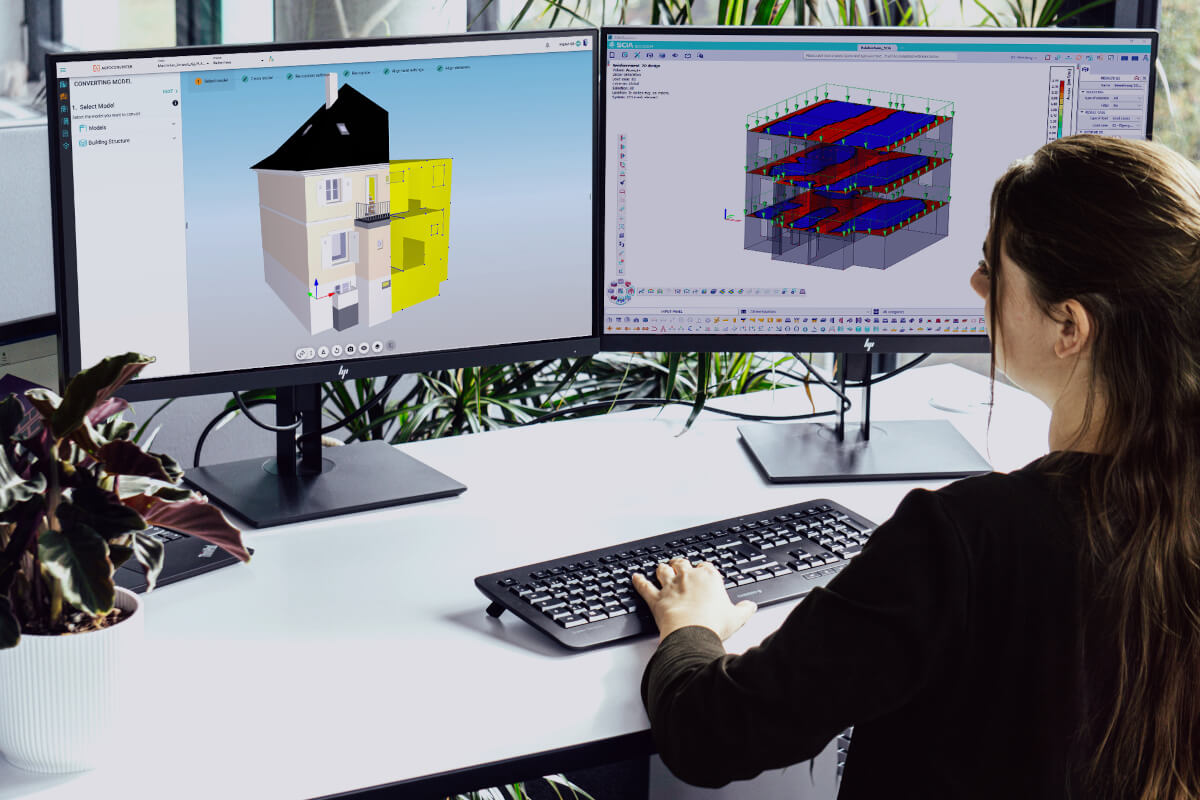
3. Calculation of the entire structure with SCIA Engineer
SCIA Engineer offers powerful analysis tools for the re-evaluation of existing structures. Structural engineers can run through various scenarios, define non-standardized cross-sections, or explore the combination of different building materials. The software also allows comprehensive structural analysis, ranging from linear and non-linear calculations to seismic analyses. This allows well-founded decisions to be made for renovation measures.
4. Static analysis of individual components with FRILO
A complete reassessment of a structure is not always necessary. In many cases, a targeted analysis of individual components is sufficient. FRILO enables the calculation of historical building materials and the consideration of specific material characteristics. In addition, thermal FEM analyses can be carried out to evaluate the load-bearing capacity in the event of fire, which increases the safety of existing structures.
5. Lateral reinforcement of wooden beams
For the renovation of timber beams that are damaged or weakened in the area of the central bearing, lateral reinforcement is an option in order to preserve the beam. With the FRILO HTV+ program, structural engineers can calculate and design single and multi-span timber beams in accordance with Eurocode 5. Lateral reinforcements made of standardized timber materials or steel profiles such as U, L, or flat steel profiles offer an economical solution.
Conclusion
Structural design in existing buildings requires precise analysis and calculation methods, powerful software and efficient collaboration between all parties involved. With its solutions, ALLPLAN offers comprehensive support for digital as-built surveys, model conversion, structural analysis, and reinforcement of existing components. With these tools, structural engineers can not only develop sustainable solutions, but also ensure economical and efficient planning processes.
